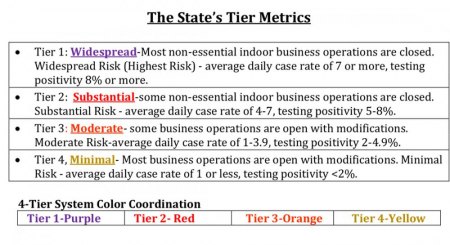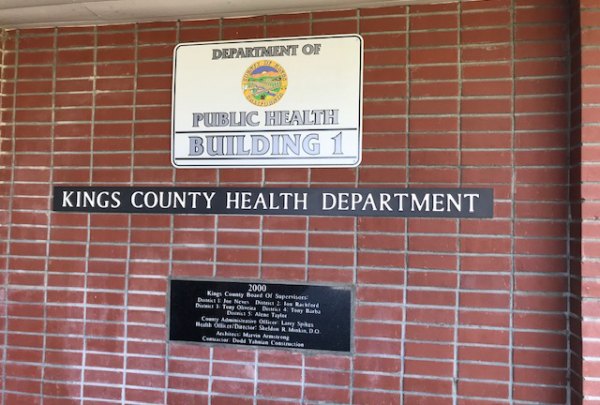California’s health officials emphasize that no matter what restrictions are put in place, COVID-19 will get the upper hand if the state’s residents fail to adapt their behaviors during the pandemic.
Simply put, the plan, the Blueprint for a Safer Economy, imposes risk-based criteria on tightening and loosening COVID-19 allowable activities and expands the length of time between changes to assess how any movement affects the trajectory of the disease.
Kings County residents can visit https://covid19.ca.gov to determine where the county falls on the framework and what activities are allowable.
“The Blueprint is statewide, stringent and slow,” said California’s governor. “We have made notable progress over recent weeks, but the disease is still too widespread across the state. COVID-19 will be with us for a long time, and we all need to adapt. We need to live differently. And we need to minimize exposure for our health, for our families and for our communities.”
The Blueprint builds on lessons learned from the first six months of the pandemic – and the new scientific understanding that has been determined – to create a new system for regulating movement and COVID-19 transmissions. It includes:
- At least 21 days to expand activities beyond the initial tier to ensure California better limits the spread of the virus.
- Mandatory metrics – case rates and test positivity – to measure how widespread COVID-19 is in each county and guide what is allowed.
- A uniform state framework, with four categories instead of 58 different sets of rules.
- A more nuanced way of allowing activity: Instead of open vs. closed, sectors can be partially opened and progressively add to their operations as disease transmission decreases; and
- A new process for tightening back up again quickly when conditions worsen.

Based on data, statistics for each county will fall into one of four colored tiers – Purple (widespread), Red (Substantial), Orange (Moderate) and Yellow (minimal) – based on how prevalent COVID-19 is in each county and the extent of community spread. That color will indicate how sectors can operate.
For example, in the Purple (widespread) tier where the disease is widespread, restaurants can only operate outdoors. But once a county has achieved a lower level of disease transmission and moved into the Red (substantial) tier, restaurants can work with 25 percent capacity indoors or 100 patrons, whichever is fewer.
Kings County is currently in the purple tier, the state’s most restrictive level.
Whether Kings County moves up or down on the tiers, depends on the number of cases per 100,000 residents and the percentage of COVID-19 tests that come back positive. Kings County will also be required to show it is targeting resources and making significant efforts to prevent and fight COVID in local communities and with individuals with the highest risk, and then demonstrate improvements in outcomes.
As Kings County moves to improve, it must remain in every tier but purple for a minimum of 21 days before becoming eligible to move into the next tier. Every Tuesday, the state will update each county’s data for the previous week and make corresponding changes to tiers. To move into a less restrictive tier, each county must meet that tier’s criteria for two straight weeks.
Counties that fail to meet the metrics for two consecutive weeks must move to the next most restrictive tier. The state may also intervene for a variety of factors, including an uptick in hospitalizations.
A key component in the plan includes wearing masks and following social distance guidelines. Until a vaccine is distributed, Californians must wear a mask every time they are with friends or others outside the household. Californians must realize that the safest place to be is still at home. And the elderly and those with medical conditions should always stay away from others as much as possible.
The Kings County Department of Public Health is urging all businesses in the county to comply with the state’s Blueprint for a Safer Economy. All industry sectors must also adhere to the county’s order immediately. Failure to comply may result in license revocations, fines, legal costs, and potential criminal penalties.
For questions or more information, interested parties may contact the Kings County Department of Public Health, Environmental Health Services at (559) 584-1411, or follow the following link for specific CDPH guidance to your industry sector.
https://www.cdph.ca.gov/Programs/CID/DCDC/Pages/Guidance.aspx

